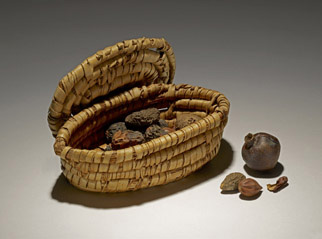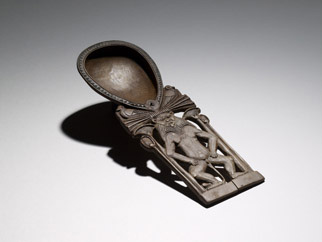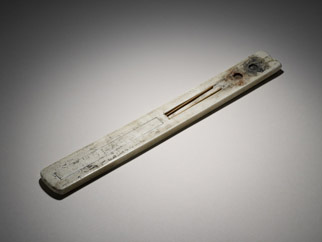4 Tomb-chapels
In this section you will look at the purpose, layout and decoration of Eighteenth Dynasty tomb-chapels.
Museums all over the world are full of objects from ancient Egypt (Figures 10–12). Some of the large sculptures are from public sites such as temple facades where they would have been seen by many people taking part in the festivals that marked the Egyptian calendar. But most of the smaller sculptures, the wall paintings and even the other kinds of objects from daily life such as jewellery, furniture, utensils and tools – not to mention, of course, coffins and mummies – have been taken from tombs: the burial sites of an elite wealthy enough to command the resources to construct memorials to themselves.



The fact that so much of this material comes from tombs means it has a peculiar status. Those objects that have come from the burial chamber itself, such as goods to accompany the deceased on his journey through the underworld, were not meant to be seen again by human eyes. The most well-known of these caches came, of course, from the tomb of Tutankhamun.
A good part of the allure of ancient Egypt comes from this resurrected gold: jewels, funerary masks, coffins and so forth. Because of the power of this legend of the Egyptian tomb, exemplified above all by Tutankhamun, there can be misunderstanding about Egyptian art. No less a figure than Gombrich, in his canonical Story of Art, writes, directly underneath an illustration of one of the paintings from Nebamun's tomb, that this was ‘an art which was meant to be seen by no-one but the dead man’s soul’. But the tombs themselves, concealed underground and never meant to be opened again, were only part of an enterprise that included a much more public dimension: than that of the tomb-chapel. Decorations such as those from the tomb-chapel of Nebamun were very much meant to be seen. They were in fact a focal point for gatherings of relatives and friends, a hinge almost, between life in this world and eternal life, carrying great responsibility for the success of the transition.
